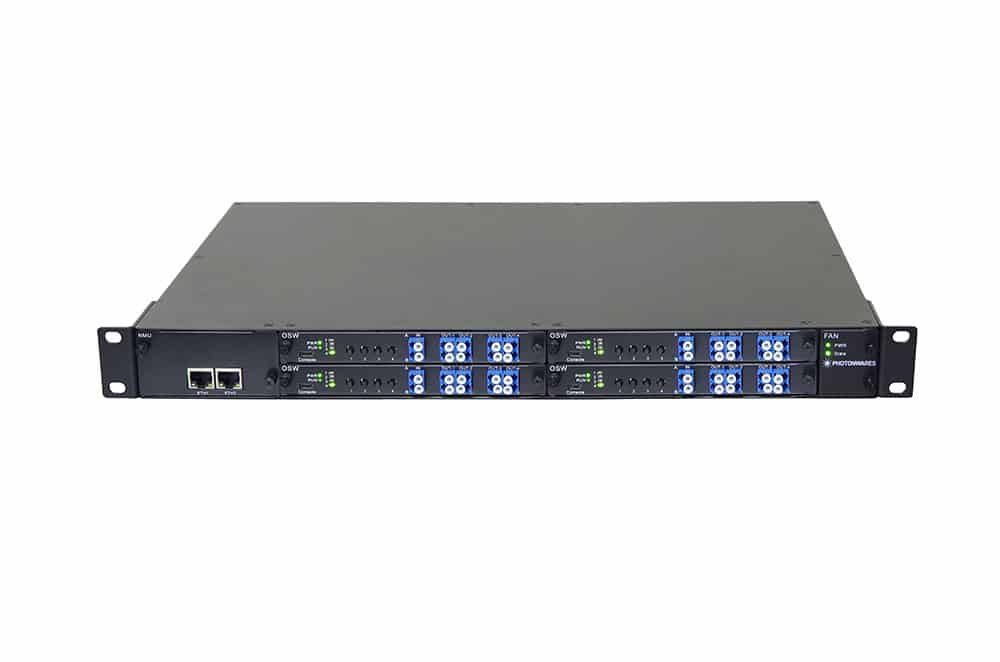SKU: NSSB
The NSSB Series high-speed fiber optic switch features ultra-fast switching, exceptionally low optical loss, and high optical power handling in a turnkey rack-mount package with high-speed TTL SMA control inputs. Switching is achieved through a patented electro-optical configuration that delivers clean, ripple-free transitions, ensuring continuous operation for over 25 years with non-mechanical, ultra-high reliability. A non-blocking configuration is constructed using multiple NS 1×2 switches, all managed via five TTL pins for rapid routing among all possible light paths. The NS Series is intrinsically bidirectional and available in either polarization-independent or polarization-maintaining versions. Switching speed is defined by the crystal’s rise/fall time, while the repetition rate depends on the tuned driver, with resonances limiting frequency response in certain bands. Each unit ships pre-mounted on a matched driver optimized for the intended operating range. Electrical power consumption varies with switching frequency.




Reviews
There are no reviews yet.